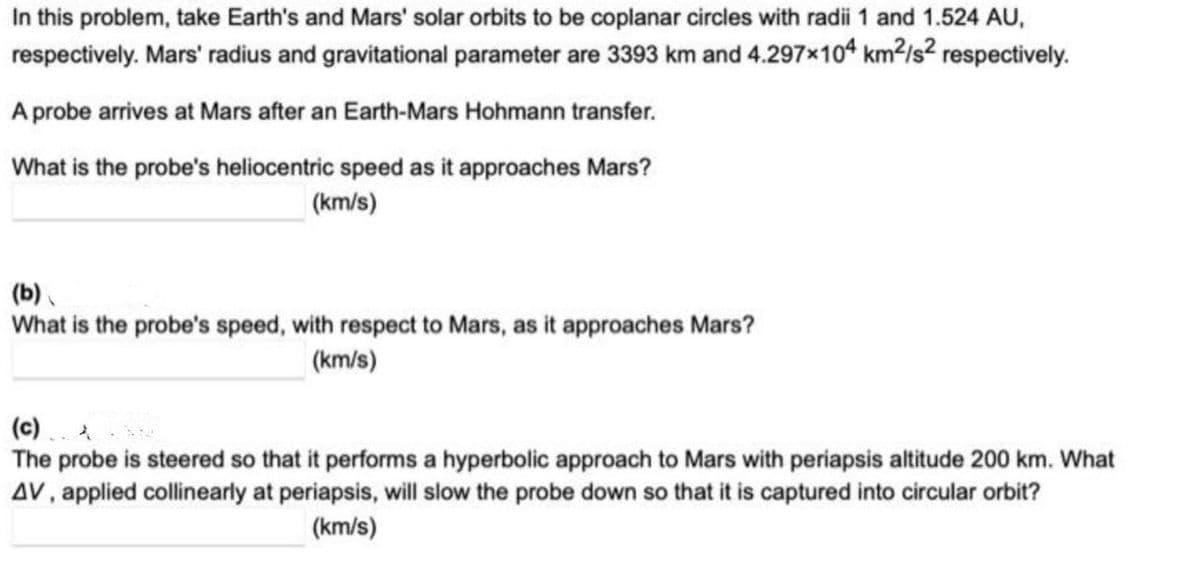In this problem, take Earth's and Mars' solar orbits to be coplanar circles with radii 1 and 1.524 AU, respectively. Mars' radius and gravitational parameter are 3393 km and 4.297x104 km2/s² respectively. A probe arrives at Mars after an Earth-Mars Hohmann transfer. What is the probe's heliocentric speed as it approaches Mars? (km/s) (b) What is the probe's speed, with respect to Mars, as it approaches Mars? (km/s)
In this problem, take Earth's and Mars' solar orbits to be coplanar circles with radii 1 and 1.524 AU, respectively. Mars' radius and gravitational parameter are 3393 km and 4.297x104 km2/s² respectively. A probe arrives at Mars after an Earth-Mars Hohmann transfer. What is the probe's heliocentric speed as it approaches Mars? (km/s) (b) What is the probe's speed, with respect to Mars, as it approaches Mars? (km/s)
Related questions
Question

Transcribed Image Text:In this problem, take Earth's and Mars' solar orbits to be coplanar circles with radii 1 and 1.524 AU,
respectively. Mars' radius and gravitational parameter are 3393 km and 4.297×104 km?/s² respectively.
A probe arrives at Mars after an Earth-Mars Hohmann transfer.
What is the probe's heliocentric speed as it approaches Mars?
(km/s)
(b).
What is the probe's speed, with respect to Mars, as it approaches Mars?
(km/s)
(c) .
The probe is steered so that it performs a hyperbolic approach to Mars with periapsis altitude 200 km. What
AV, applied collinearly at periapsis, will slow the probe down so that it is captured into circular orbit?
(km/s)
Expert Solution
This question has been solved!
Explore an expertly crafted, step-by-step solution for a thorough understanding of key concepts.
Step by step
Solved in 3 steps
